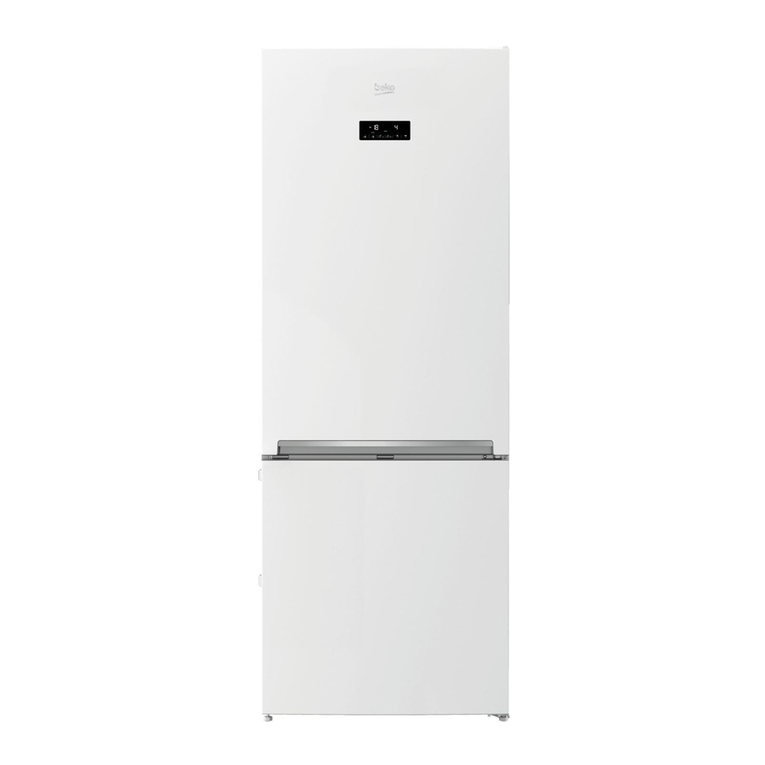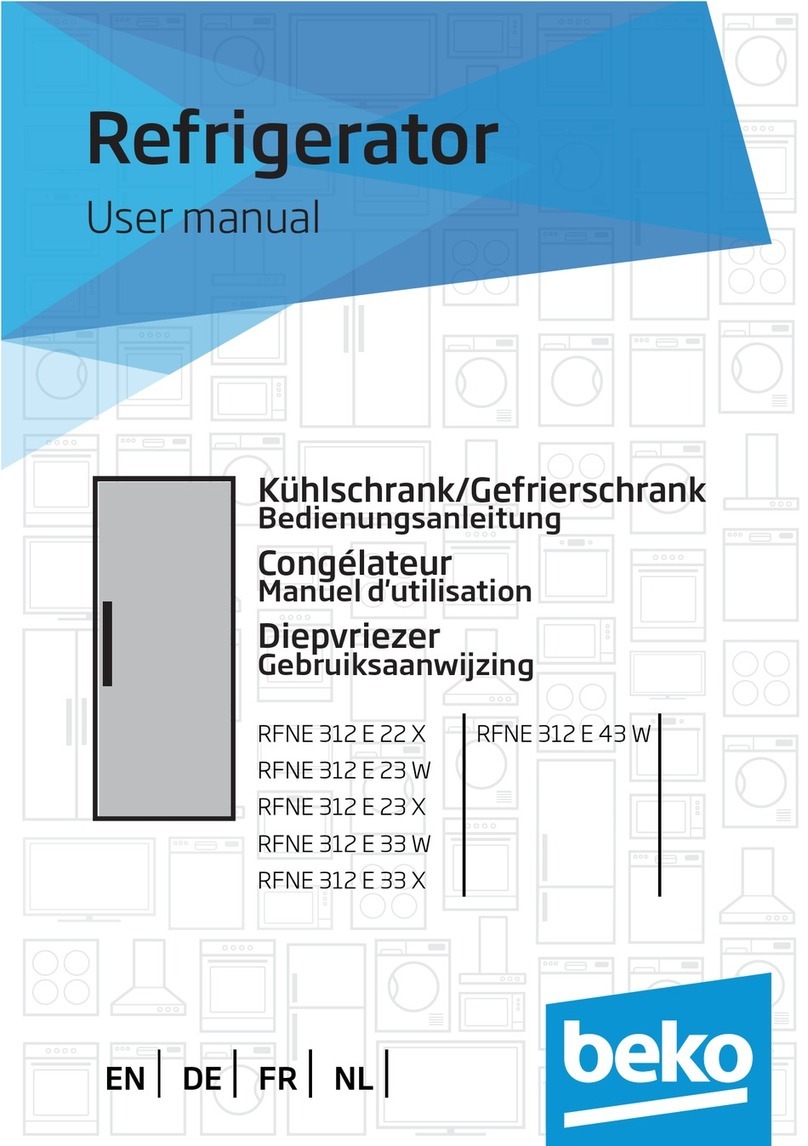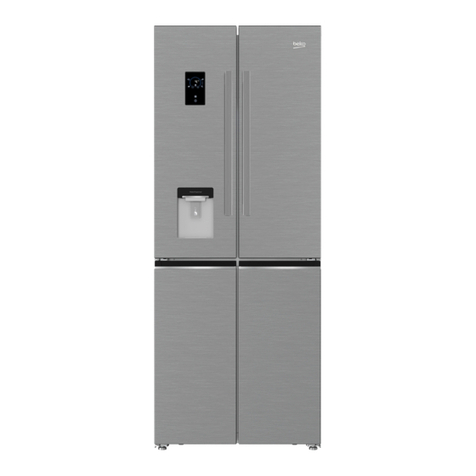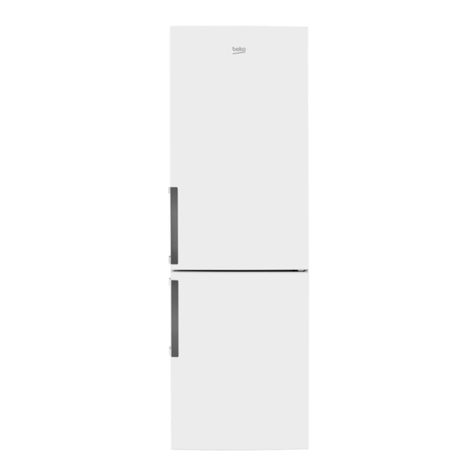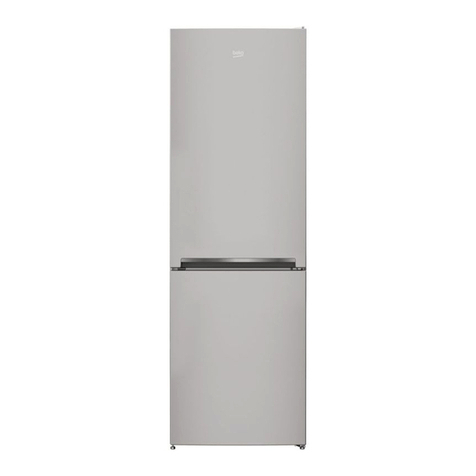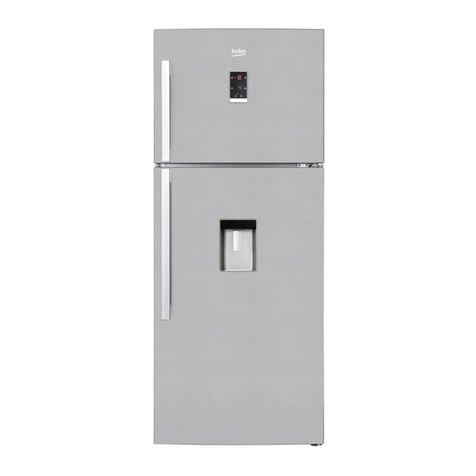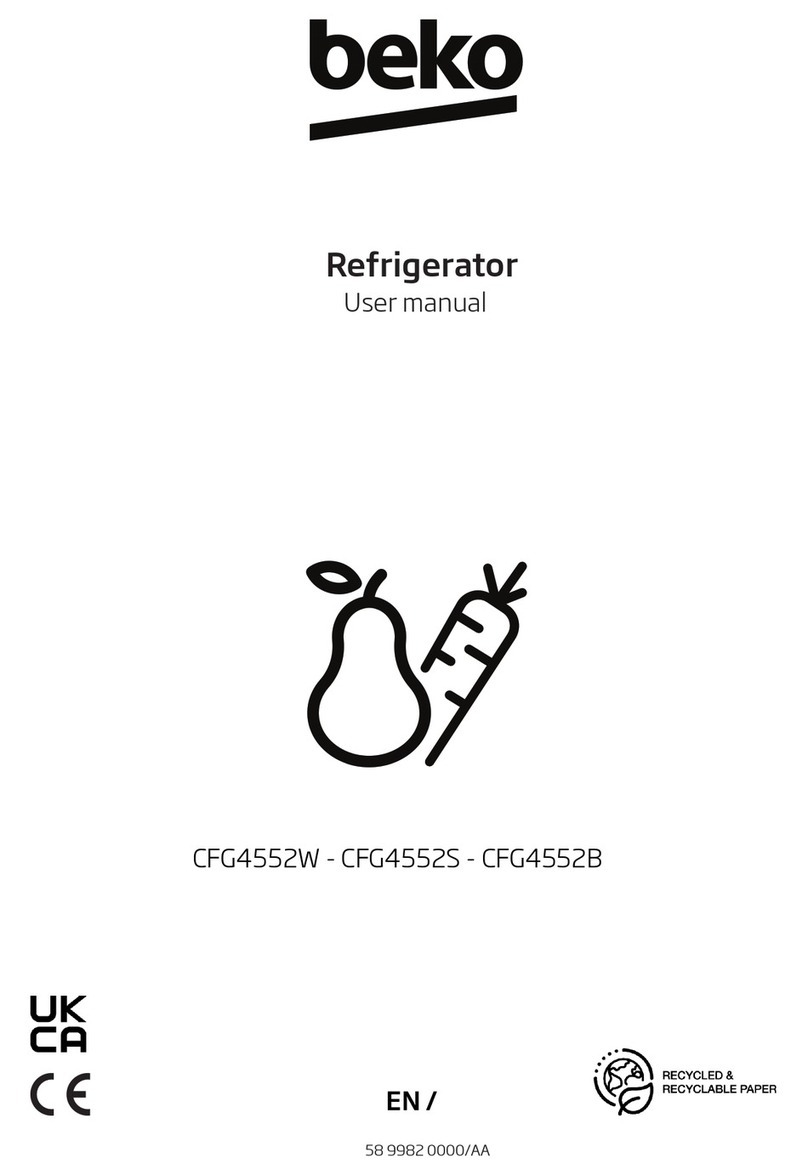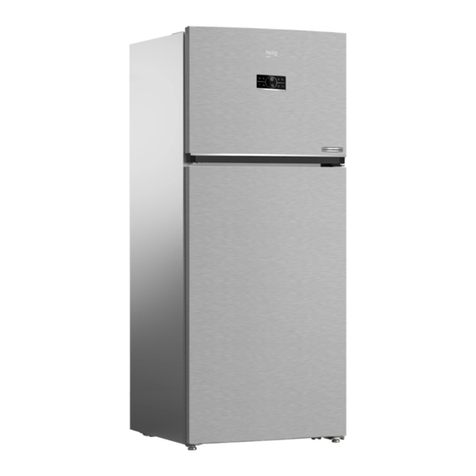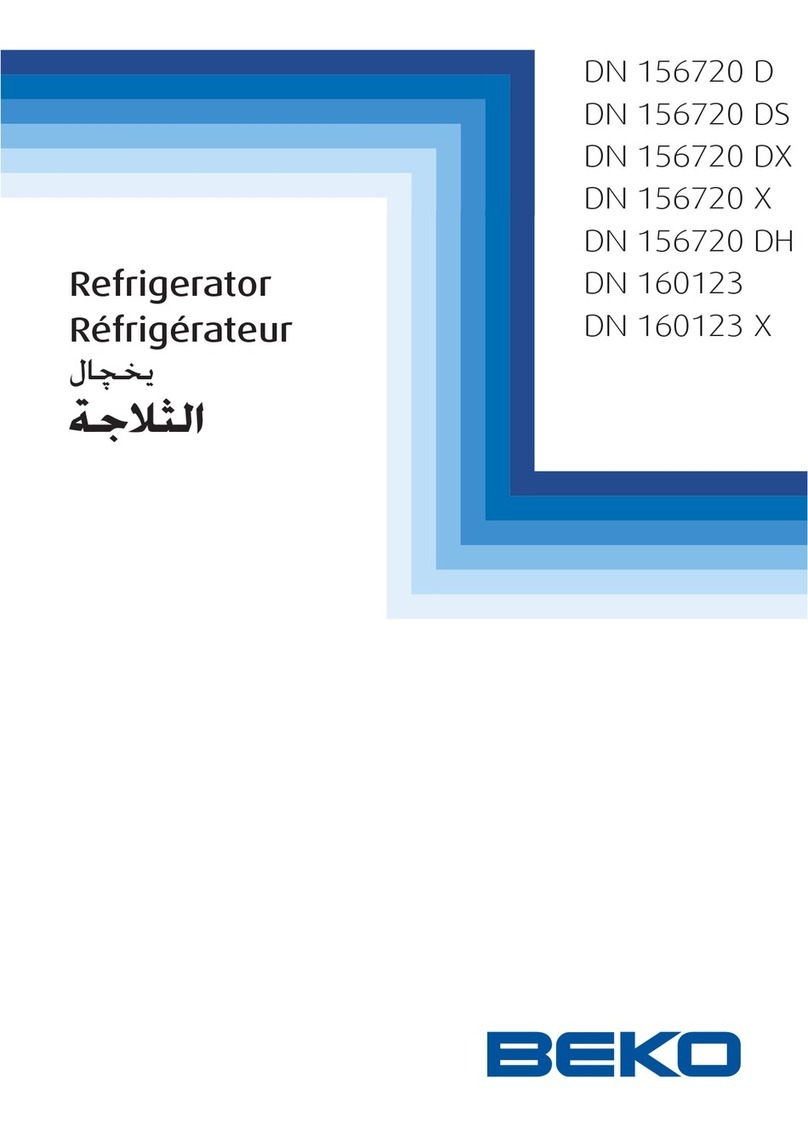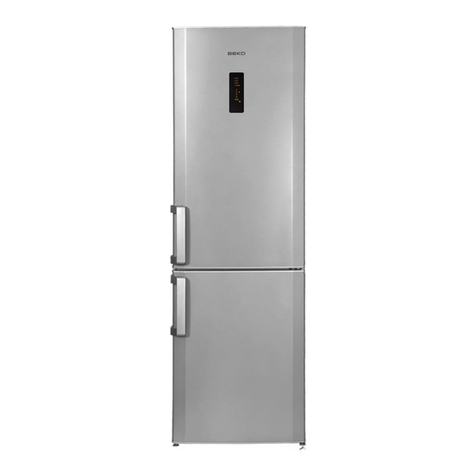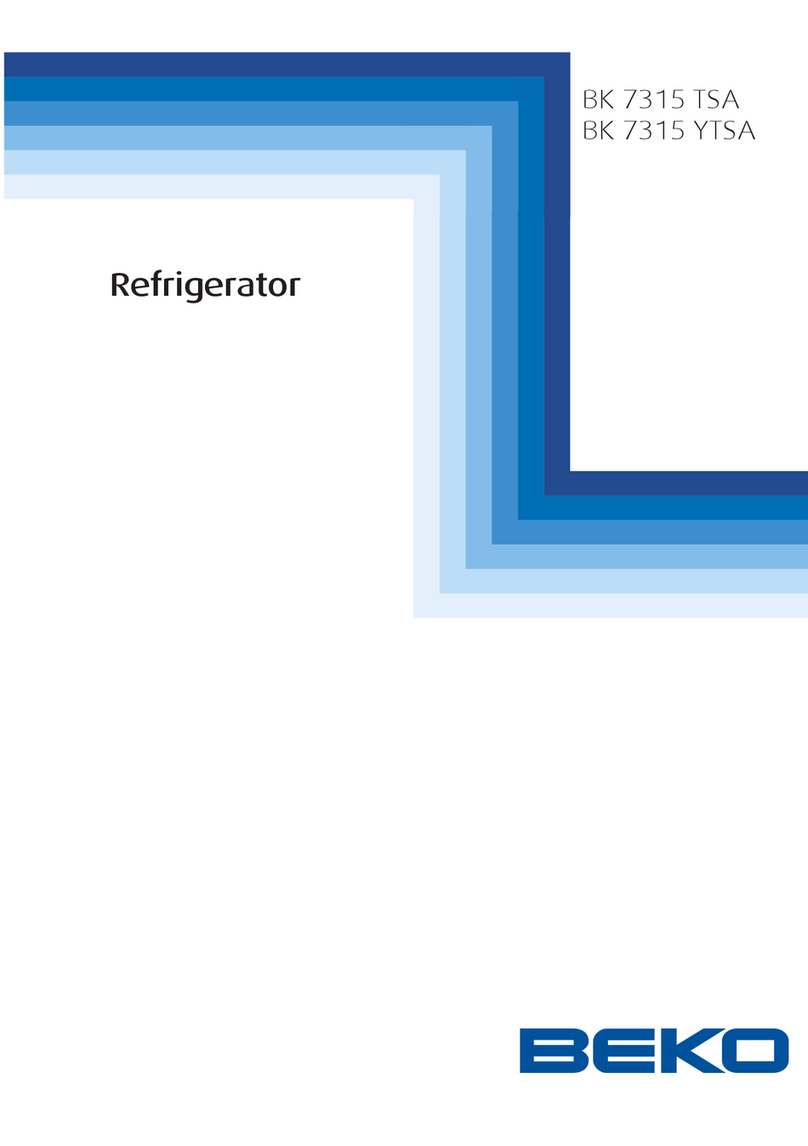WARNING!
In order to ensure a normal operation of your refrigerating appliance, which uses a completely environmentally
friendly refrigerant the R600a (flammable only under certain conditions) you must observe the following rules:
Do not hinder the free circulation of the air around the appliance.
Do not use mechanical devices in order to accelerate the defrosting, others than the ones recommended by the
manufacturer.
Do not destroy the refrigerating circuit.
Do not use electric appliances inside the food keeping compartment, other than those that might have been
recommended by the manufacturer.
ATTENTION!
Pour assûrer un fonctionnement normal de votre appareil qui utilise un agent frigorifique complètement écologique,
R600a (infammable seulement dans certaines conditions) vous devez respecter les règles suivantes:
N’empêchez pas la libre circulation de l’air autour de l’appareil.
N’ utilisez pas des dispositifs mécaniques pour accélérer le dégivrage, autres que ceux récommendés par le
fabriquant.
Ne détruissez pas le circuit frigorifique.
N’utilisez pas des appareils électiques à l’intérieur du compartiment pourconserver les denrées, apart celles qui
sont éventuellement récommendés par le fabriquant.
UPOZORNĚNÍ!
Aby byl zajištěn normální provoz vaší chladničky, která používá pro životní prostředí zcela neškodné chladicí
médium R600a (vznětlivé pouze za určitých podmínek), musíte dodržet následující pravidla:
Nebraňte ve volné cirkulaci vzduchu kolem přístroje.
Nepoužívejte mechanická zařízení pro zrychlení odmražení kromě těch, která jsou doporučená výrobcem.
Nelikvidujte chladicí okruh.
Nepoužívejte elektrické spotřebiče uvnitř prostoru pro potraviny kromě těch, která by mohl doporučit výrobce.
VAROVANIE!
Aby sa zabezpečila normálna prevádzka vašej chladničky, ktorá používa úplne ekologicky nezávadné chladivo R
600a (horľavé len pri určitých podmienkach), musíte dodržiavať nasledujúce pravidlá:
Nebráňte voľnej cirkulácii vzduchu okolo spotrebiča.
Nepoužívajte mechanické prístroje na urýchľovanie rozmrazovacieho procesu, iné ako odporúča výrobca.
Neporušujte chladiaci okruh.
Nepoužívajte elektrické spotrebiče vo vnútri pípacieho priestoru potravín, iné ako tie, ktoré odporúčal výrobca.
UWAGA!
Aby zapewnić normalną pracę tej, wykorzystującej całkowicie przyjazny środowisku (łatwopalny tylko w pewnych
warunkach) środek chłodniczy R600a, chłodziarko-zamrażarki, należy przestrzegać następujących zasad:
Nie należy blokować swobodnego przepływu powietrza wokół chłodziarko-zamrażarki.
W celu przyśpieszenia rozmrażania nie należy używać żadnych innych urządzeń mechanicznych niż zalecane
przez producenta.
Nie wolno uszkodzić obwodu chłodniczego.
Wewnątrz komory przechowywania żywności nie należy używać żadnych innych urządzeń elektrycznych niż
ewentualnie zalecanych przez producenta.
ВНИМАНИЕ!
Вашия апарат съдържа хладилна течност R600a (запалим само при определени условия) газ от естествен
произход който е силно съвместим със изискванията за опазване на околната среда. За да осигурите
нормална работа на Вашият уред моля спазвайте следните правила:
Осигурете нормална вентилация на уреда.
Не използвайте механични устройства за размразяване на уреда, освен тези препоръчни от
производителя.
Не наранявайте хладилната верига.
Не използвайте електрически уреди вътре в апарата.



